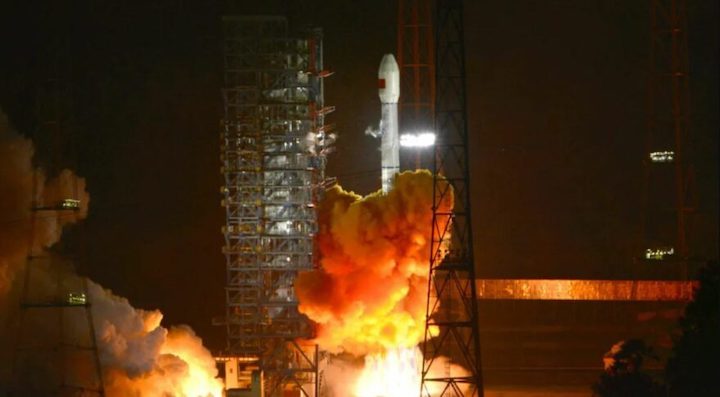10.09.2021
China successfully launched a new direct broadcast satellite (DBS) from the Xichang Satellite Launch Center in southwest China's Sichuan Province Thursday.
The satellite, Zhongxing-9B, was launched at 7:50 p.m. (Beijing Time) by a Long March-3B carrier rocket and entered the planned orbit successfully.
The new DBS is designed to run for 15 years and will be operated by the China Satellite Communications Co., Ltd., said the China Aerospace Science and Technology Corporation.
Zhongxing-9B, equipped with specially designed transponders, can support the transmission of 4K and 8K high-definition video programs and provide high-quality live broadcast transmission services for major events such as the upcoming Beijing 2022 Winter Olympics.
In addition, the new DBS will provide timely and reliable communication services for emergency rescue and disaster relief.
This launch marked the 388th mission for the Long March series carrier rockets. Enditem
Quelle: Xinhua
+++
China launches ChinaSat-9B broadcast satellite

HELSINKI — China conducted its 33rd launch of 2021 early Thursday, successfully sending the ChinaSat-9B communications satellite into geosynchronous transfer orbit.
A Long March 3B lifted off from the Xichang Satellite Launch Center, southwest China, at 7:50 a.m. Eastern, September 9.
The China Aerospace Science and Technology Corp. (CASC) announced ChinaSat-9B, also known as Zhongxing-9B, had entered its intended orbit within an hour of launch.
ChinaSat-9B will provide live broadcast services, support 4K and 8K high-definition video program transmission using a specially designed 54MHz bandwidth transponder, and provide high-quality live broadcast transmission services for large-scale events, according to CASC.
The satellite will be operated by CASC subsidiary China Satcom and provide communication services for emergency rescue and disaster relief.
The satellite is based on the DFH-4E, an enhanced version of the established DFH-4 platform developed by China Academy of Space Technology (CAST), a major satellite manufacturing arm of CASC. The DFH-4E has a mass of around 5,500 kilograms and features hybrid electric- and chemical-propulsion.
CASC states that China Satcom manages and operates 15 satellites in orbit, including ChinaSat and Apstar series satellites. Zhongxing-9B will replace Zhongxing-9A.
The latter launched in June 2017 but a third stage anomaly left the satellite in a lower orbit than planned. This required Zhongxing-9A to use its own propellant for 10 orbital adjustments to raise itself into geostationary orbit at 101.4 degrees East and in doing so greatly reduced its planned 15-year lifetime.
A Chinese news report in February stated that the satellite’s propellant had been fully depleted, just over three and a half years after launch.
The orbit of Zhongxing-9A has been raised 130 kilometers above geostationary orbit following its end of service. This is however short of the 300-kilometer raise needed to put ChinaSat-9A into an ideal GEO graveyard orbit.
Space analyst Jonathan McDowell told SpaceNews that it may be the case that in raising the satellite to GEO enough propellant was not kept for the final retirement burn. McDowell notes that the satellite has drifted around the world since February and is once again over China. If the orbit of Zhongxing-9A is to be raised further, it would likely be during the next couple of weeks while the satellite is in view of Chinese groundstations.
The first satellite based on the DFH-4E was Zhongxing-18 (ChinaSat-18). The satellite launched in August 2019 atop a Long March 3B launch vehicle but suffered unspecified anomalies and attempts to communicate with the satellite were unsuccessful. Zhongxing-18 remains in geosynchronous transfer orbit with a perigee of 147 kilometers.
The Indonesian Nusantara-2 DFH-4E-based satellite was lost following a Long March 3B third stage issue in April 2020.
China has attempted 33 launches so far in 2021. CASC has been successful with all 31 of its launches, with more than 40 planned in total this year by the state-owned giant.
CASC is preparing to send the Tianzhou-3 cargo spacecraft to the Tianhe space station module within the next two weeks. The crewed Shenzhou-13 mission is planned to follow in October.
The other two Chinese launches came from private firm iSpace, which has suffered two failures of its Hyperbola-1 light-lift solid rocket. Fellow private launch company Galactic Energy is meanwhile preparing to launch its second Ceres-1 solid rocket in October.
Quelle: SN

